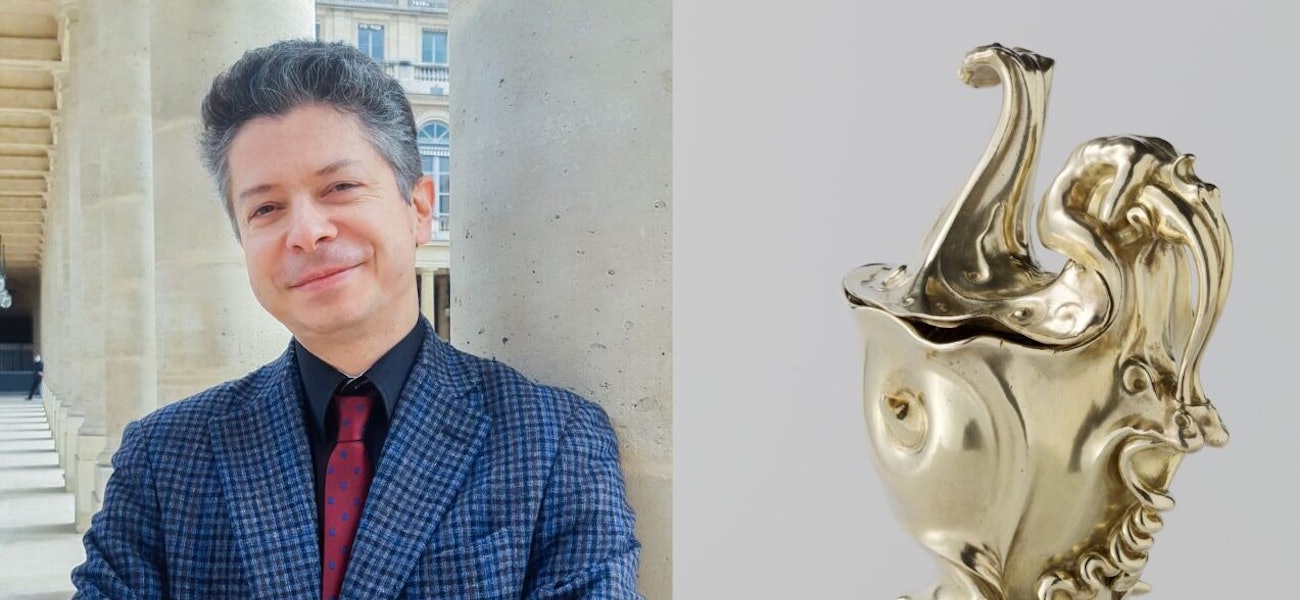A guided tour at the Louvre, the world’s most-visited museum, should be considered an experience of a lifetime. Few other places can match the expertise of world-class curators, the history of storied artifacts, and the allure of a French city all at once—except, this month, Baton Rouge’s own LSU Museum of Art. On Feb. 28, the museum presents the fourth installment in its H. Parrott Bacot Distinguished Visiting Scholar Series, this time featuring Blaise Ducos, a curator of 17th- and 18th-century Dutch and Flemish paintings at—you guessed it—the Louvre.
Named for the late Henry “Pat” Parrott Bacot Jr., a well-known LSU professor of art history and former executive director of the LSU Museum of Art, the quarterly lecture series aims to deliver in-person presentations from international and regional experts on decorative art pieces that make connections to the museum’s own collection.
In Ducos’ lecture, “Metal into Paint: The Many Lives of the Van Vianen Vase,” however, the focus will rest firmly on the titular vase, an unusually whimsical 17th-century piece of silverware currently housed in Amsterdam’s Rijksmuseum, and its legacy as a recurring motif in that era’s paintings.
|
|
|
“I grew interested in the phenomenon as I became aware of the variety of noted artists (especially from Rembrandt’s circle) who had illustrated it,” says Ducos. “The piece’s allure owes much to a somewhat mysterious quality: without a label, would you know it dates back to the 17th century? It looks far more recent—that is because it is highly innovative, and anticipates movements such as Art Nouveau.”
The lecture will serve as an important touchstone for anyone interested in the intricacies of the decorative arts, which rarely receive the same recognition as paintings or sculptures. Even Michelle Schulte, senior curator and director of public programs for LSU MOA, can recall her early observations of the collection’s various antique wardrobes, crediting experts in the decorative arts with teaching her about the beauties of the craft once invisible to her eye.
“What these lectures do is demystify what the decorative arts really are,” she says. “They can define how we look at a cabinet or a table or a chair and see them as art pieces, and talk about the fact that there are aesthetics and talents necessary for anybody to create these forms. These lecturing experts have been trained in those aesthetics and have the background to put it all together, which is important for us as we hope to further our own collection of decorative arts.”
For Ducos, the importance of highlighting these centuries-old objects remains a great pleasure in the study of art.
|
|
|
“There is no such thing as ‘old art,’” he says. “Art is always new; you just have to look at it and delve into the stories that made it possible. Art is inspiring, and never ceases to be.”
For more information, visit lsumoa.org.
This story originally appeared in inRegister. To keep up with inRegister, subscribe to the free inRegister@Home e-newsletter here.





